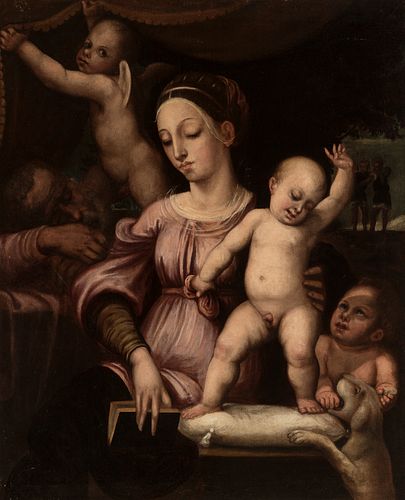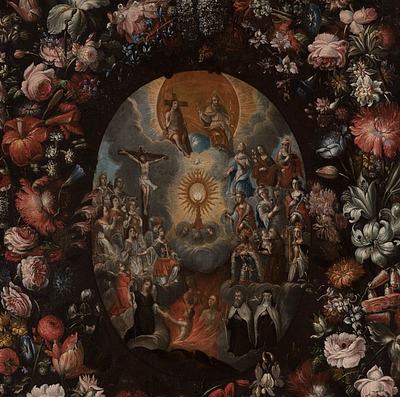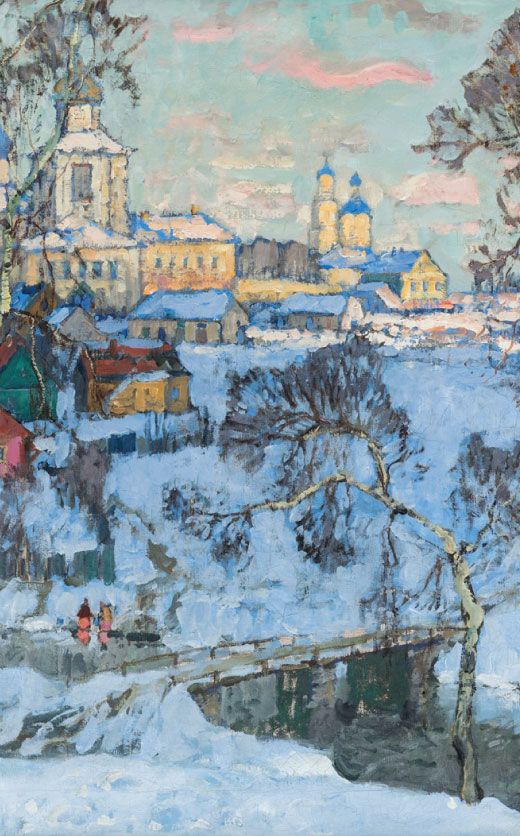Spanish school; ca. 1600. "Holy family with San Juanito". Oil on canvas. Re-enteled.
Lot 65
About Seller
Setdart Auction House
Carrer Aragó 346
Barcelona
Spain
Setdart Subastas was born in 2004 and is currently the first online art auction in Spain with solidity, prestige and reliability guaranteed by our more than 60,000 users. Setdart has a young, dynamic and enterprising team ready to successfully manage the purchase and sale of art works through custom...Read more
Estimate:
EUR€6,000 - EUR€7,000
$6,382.98 - $7,446.81
Absentee vs Live bid
Two ways to bid:
- Leave a max absentee bid and the platform will bid on your behalf up to your maximum bid during the live auction.
- Bid live during the auction and your bids will be submitted real-time to the auctioneer.
Bid Increments
| Price | Bid Increment |
|---|---|
| EUR€0 | EUR€10 |
| EUR€200 | EUR€25 |
| EUR€500 | EUR€50 |
| EUR€1,000 | EUR€100 |
| EUR€3,000 | EUR€200 |
| EUR€5,000 | EUR€500 |
| EUR€10,000 | EUR€1,000 |
| EUR€20,000 | EUR€2,000 |
| EUR€50,000 | EUR€5,000 |
About Auction
By Setdart Auction House
Jul 14, 2021
Set Reminder
2021-07-14 06:30:00
2021-07-14 06:30:00
America/New_York
Bidsquare
Bidsquare : OLD MASTERS
https://www.bidsquare.com/auctions/setdart-auction-house/old-masters-7202
Setdart Auction House sofia@setdart.com
Setdart Auction House sofia@setdart.com
- Lot Description
Spanish school; ca. 1600. "Holy family with San Juanito". Oil on canvas. Re-enteled. Presents repainting. Size: 97 x 80 cm; 117 x 99 cm (frame). Scene of devotional character in which we can appreciate the presence of San José sleeping located in the left zone of the composition, The Virgin and the Child in the center, San Juanito in the right part, besides a small angel that completes the scene. It is worth mentioning that the Child has been portrayed in the foreground, next to the Virgin Mary, while the rest of the characters are in the background. All of them are inscribed in an interior of dark tones, illuminated by the flesh tones of the characters. The scene presents an intimate character since in spite of the hieratism of the figures, The Virgin and the Child share an attitude as a Game and of complicity between both. In the most common sense of the expression, the Holy Family includes the closest relatives of the Child Jesus, that is, mother and grandmother or mother and nurturing father. In both cases, whether it is St. Anne or St. Joseph who appears, it is a group of three figures. From the artistic point of view, the arrangement of this terrestrial Trinity poses the same problems and suggests the same solutions as the heavenly Trinity. However, the difficulties are fewer. It is no longer a question of a single God in three persons whose essential unity must be expressed at the same time as diversity. The three personages are united by a blood bond, certainly, but they do not constitute an indivisible block. Moreover, the three are represented in human form, while the dove of the Holy Spirit introduces into the divine Trinity a zoomorphic element difficult to amalgamate with two anthropomorphic figures. On the other hand, this iconography was traditionally, until the Counter-Reformation, a representation of the Virgin and Child to which the figure of St. Joseph was added in the foreground. It was not until the reforms of Trent when St. Joseph began to take center stage as protector and guide of the Infant Jesus. Spanish Baroque painting is one of the most authentic and personal examples of our art, because its conception and its form of expression arose from the people and the deepest feelings that nested in it. With the economy of the State broken, the nobility in decline and the high clergy burdened with heavy taxes, it was the monasteries, the parishes and the confraternities of clerics and laymen who promoted its development, and the works were sometimes financed by popular subscription. Painting was thus forced to capture the prevailing ideals in these environments, which were none other than religious ones, at a time when the counter-reformist doctrine demanded from art a realistic language so that the faithful would understand and identify with what was represented, and an expression endowed with an intense emotional content to increase the fervor and devotion of the people. The religious subject is, therefore, the preferred theme of Spanish painting of this period, which in the first decades of the century starts from a priority interest in capturing the natural, to progressively intensify throughout the century the expression of expressive values, which is achieved through the movement and variety of gestures, the use of light resources and the representation of moods and feelings.
- Shipping Info
-
In-house shipping available. Please inquire at admin@setdart.com.
-
- Buyer's Premium



 EUR
EUR CAD
CAD AUD
AUD GBP
GBP MXN
MXN HKD
HKD CNY
CNY MYR
MYR SEK
SEK SGD
SGD CHF
CHF THB
THB

















